If you follow me on social media then you will have seen me trying to educate pr girls and brand ambassadors about how they can comply with the ASA marketing laws that came into effect in Jan of 2019.
The CMA/ASA published a list of ‘things influencers needs to do’, including:
- Say when you’ve been paid, given, or loaned things
- Be clear about your relationship with brands
- Don’t be misleading
- Disclose in a way that is honest, transparent, easy to understand and unambiguous
- Disclosure should be upfront
Since then I have tried my best to show what would be acceptable and what is not. This is not in any way legal advice I am not a lawyer and I am not your marketing director. I do enough of that in my day job. But because of my day job, I have a lot of knowledge in this space and it is something that a lot of shops don’t think about or are even aware of.
As a PR person, you are mostly asked to produce Advertorial content: this includes content you create for a brand that you post on your own channels and are an ad if the brand paid you (either money or ‘in kind’, such as free product, discounted products or a free hotel stay) and exerted some form of control over the content (e.g. dictated when you should post or required final approval before publishing).
You may be thinking, “What does control look like in the planner world?”. Well, control in the planner world comes down to when and how many posts you do, and requiring a certain number of posts. Usage of particular hashtags and the type of posts, eg unboxing/hauls.
So how should you ultimalty disclose ADs? Well the CMA/ASA states that you should disclose a relationship with a brand and that it should be:
- Transparent
- Easy to understand
- Unambiguous
- Timely
- Prominent and upfront
According to the CAP code, an ad ‘must be obviously identifiable as such‘. That makes a fair amount of sense. The disclosure shouldn’t be after the ‘see more’ section. Nor should it be right at the very end of the post or in the comments. Or worst hidden in a sea of hashtags.
So after that crash course into some of the highlights that are now in place for Influencer Marketing. Yes, you’re an influencer, you’re influencing others to purchase a product.
So since Jan 2019 what are the comments and questions I have got about being a PR person for a shop and what you need to do in order to comply with the law?
“The shop I work for is not in the UK. I don’t have to mark my posts!”
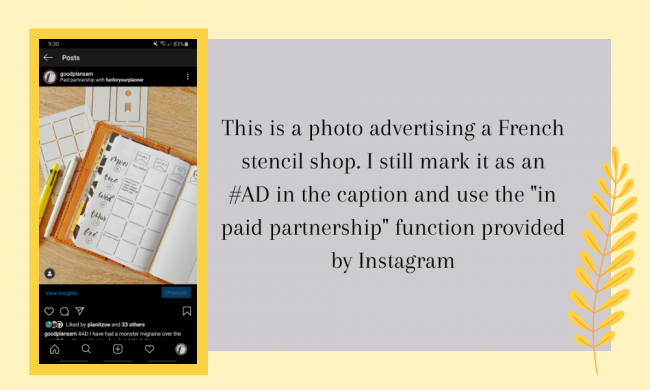
Well yes, you do. You’re in the UK, you’re advertising for that company so UK law applies to you. You have to make it immediately identifiable that the post that your followers are looking at is an advertisement. Just because the shop is overseas, this does not exempt you from following the advertising laws.
Side note: If you are outside the UK make sure that you check what your countries laws are around influencer marketing. I know that the FTC in the US has a bunch of resources. And if you are in Norway and photoshop your images of people you have to disclose that as well.
“I mark my post in the comments as an #ad so I am covered”
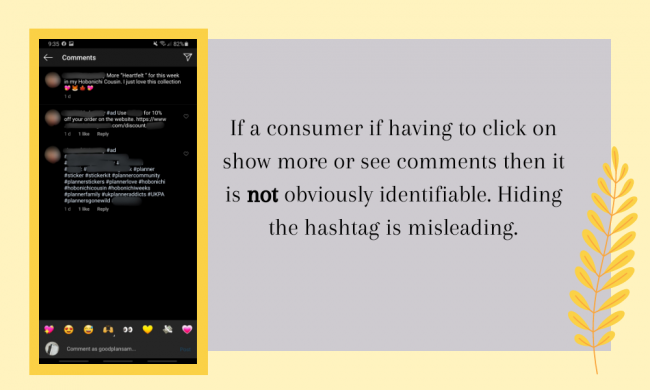
No, you are not. This is incredibly misleading, and it makes people think that you are just a regular consumer. “Under the CAP Code ads ‘must be obviously identifiable as such’ and the CMA advises that they must be ‘clearly identifiable’ to comply with consumer law.”. If someone can not see straight away and they are having to click on see more then it is not complying.
“I have marked my posts/stories as #pr that’s fine”
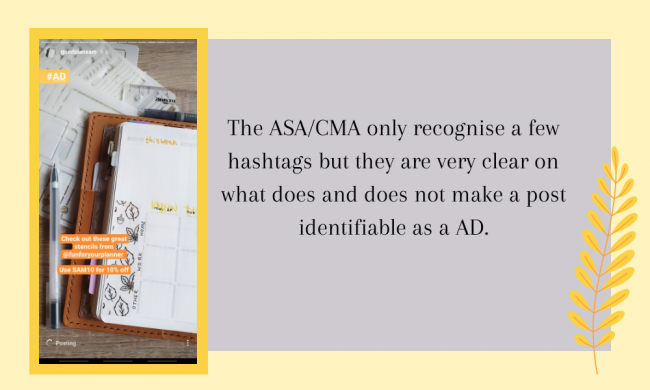
No, this is not sufficient in the eyes of the ASA and should be marked as #AD. At the end of the day, you are advertising for that shop. The guidebook says that the ASA likes clear labels such as “ad”, “advert”, “advertisement” or “advertising feature”, in conjunction with Instagram’s built-in ‘paid partnership’ tool.
“But I have a shop banner on my pictures.”
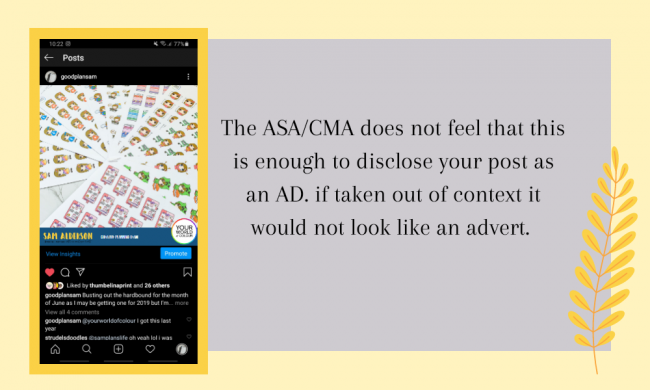
TBH this one shocked the ASA agent I spoke to. But they said that this was not enough to show that the post is an advert. It must still have #ad at the start of the caption. See above.
“But I only have xxx amount of followers”
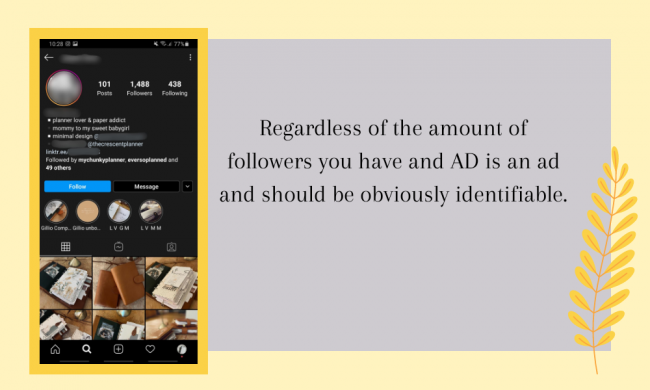
An Ad is an AD regardless of the number of followers you have. If you are advertising on behalf of a company to even 5 people that is still an advert and needs to be marked as such. You may find that you fall into one of 4 different levels of Influencers;
- Mega – more than a million followers.
- Macro – 100,000 and one million followers.
- Micro – between 1,000 to 100,000 followers.
- Nano – less than 1,000 followers.
“I have the “in paid partnership” on my posts.”
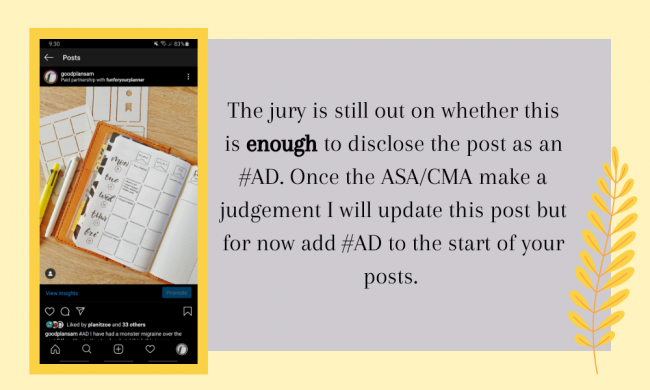
This is still a bit of a grey area for the ASA they are currently doing research into this and will be bringing out rules around this at some point but at the moment the advice is to still put #ad at the start of your captions.
Just a note on this, speak to the shop owner to add you to their branded content on Instagram and you can use this feature, though you do need to have a creator account on Instagram.
“Is this all platforms or just Instagram”
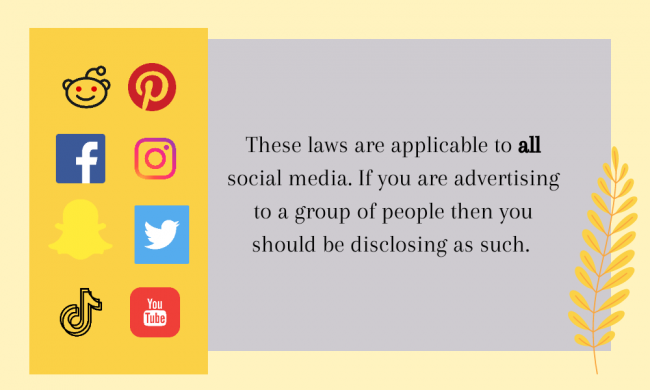
This is for across ALL social media. YouTube does have some tools to help you with labeling videos. But these laws are not just focused on Instagram. They are applicable across ALL social media including Facebook Groups.
“Does this cover stories as well as posts?”
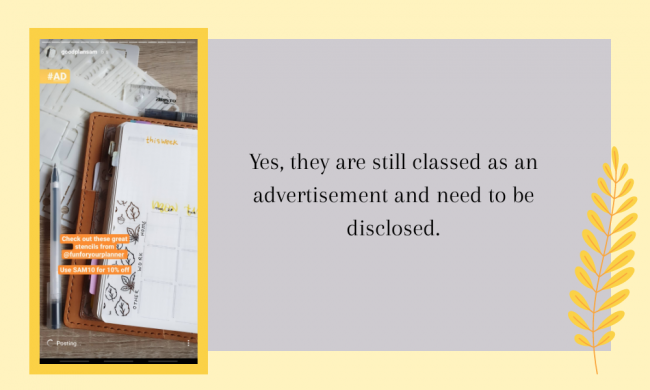
Yes, this covers stories as well as posts. It is still an advert that is being seen by someone. You just need to clearly label such as “ad”, “advert”, “advertisement” or “advertising feature”, in conjunction with Instagram’s built-in ‘paid partnership’ tool.
“How many teams are too many teams?”

This is really up to you and your conscience. Each team is, at the end of the day a job, you have tasks to fulfill and a reputation to uphold. How many jobs would you be comfortable having? However, as I said in my blog post about joining a team you should really try to avoid representing shops that have similar styles or products.
I really hope that this helps you guys. I know that the UK influencer law can be annoying and sometimes confusing but at the end of the day, it is the law. You as a PR/Brand Ambassador have a responsibility to follow that law.
And If you think as one person messaged me “It’s just a bit of fun for me and my followers” then I am sorry but the ASA will not see it that way and you may end up with a fine.
This article was brought to you by WordPress (not an ad) and HP (not an ad, but I could do with a new laptop if they’re looking for influencers…). Sam was not paid or offered free items (except a glass of wine by Jono during the process of writing) to write this article. She also now realizes this disclosure should be at the top so as to abide by the guidelines of ‘prominent’ and ‘upfront’. Darn.


